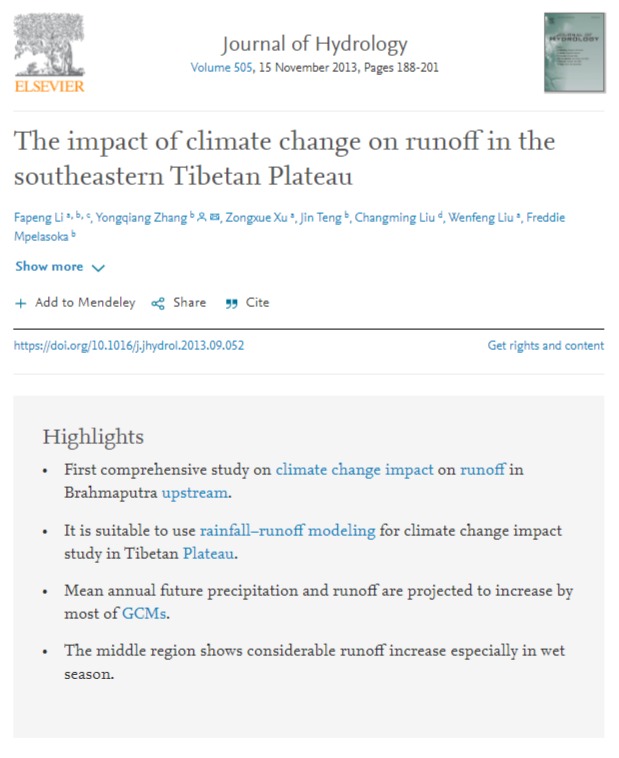
Summary The Tibetan Plateau (TP) is the “water tower of Asia” and strongly influences both the hydrology and climate of southern and eastern Asia. Exploring the impact of climate change on the runoff of TP rivers is critical to improve water resources management. However, thorough studies on the runoff response to climate change are seldom conducted on large TP river systems. To complement the current body of work, this study uses two rainfall–runoff models (SIMHYD and GR4J) to simulate the monthly and annual runoff across the Yarlung Tsangpo River (YTR) basin in the southeastern TP (i.e., upstream of the Brahmaputra) under historical (1962–2002) and future (up to approximately 2030) climate conditions. The future climate series are obtained by using 20 Global Climate Models (GCMs) outputs from the Intergovernmental Panel on Climate Change (IPCC) Fourth Assessment Report (AR4) to reflect a 1 °C increase in the global average surface air temperature. The two rainfall–runoff models successfully simulate the historical runoff for the eight catchments in the YTR basins with median monthly runoff Nash–Sutcliffe Efficiencies (NSE) of 0.86 for SIMHYD and 0.83 for GR4J. The mean annual future precipitation and runoff across the region are projected to increase by most of the modeling results. The mean annual precipitation changes obtained from the 20 GCMs are −15%, 7% and 16% for the 10th percentile, median and 90th percentile of GCM outputs, respectively, and the corresponding changes in the simulated mean annual runoffs are −24%, 13% and 29% for the SIMHYD model outputs and −22%, 11% and 26% for the GR4J model outputs. The projected increase in the runoff at the median percentile mainly occurs in the middle reaches of the YTR and its two tributaries, the Lhasa River and the Nyangqu River, with a 12% increase in annual runoff that mainly occurs in the wet season from May to September. The present work is the first comprehensive study on the hydrological response to climate change covering the entire upstream area of the Brahmaputra, and the results found in this study are not only helpful for local water resource management but also for the lower reaches of the Brahmaputra.